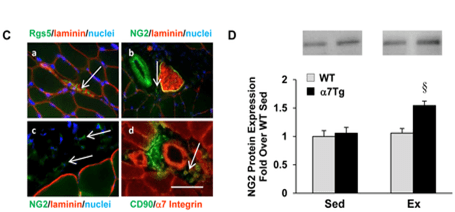Exercise Increases the Stem Cells in your Muscles
Stem cells live all over our bodies and this topic is covered in our book, Orthopedics 2.0. Now a research team from the University of Chicago has found that a single round of exercise leads to more muscle stem cells in mice. This fits with research I’ve blogged on before showing that elderly weight lifters have muscles that look more genetically similar to their younger counterparts and that the stem cells in their muscle tissue can still make more stem cells (proliferation). In the new study the researchers found that muscle stem cells (muscle mesenchymal stem cells) secreted factors that helped grow new muscle cells. The cells increase in number and secrete these factors in response to muscle strain. Their increase in number in the first 3 hours after exercise is not because the stem cells grow more of themselves, but more likely because pericyte cells migrate into muscle and become more muscle stem cell like. Pericytes are stem cell like cells that live around nerves and arteries lying in wait for trauma. When trauma is detected, they migrate out and can turn into certain types of mesenchymal stem cells to oversee repair. The upshot? This is one of several papers showing that exercise and weight lifting make muscles bigger and healthier through stem cells. So to put it terms of a 1990’s Nike commercial, “Just do it…”

If you have questions or comments about this blog post, please email us at [email protected]
NOTE: This blog post provides general information to help the reader better understand regenerative medicine, musculoskeletal health, and related subjects. All content provided in this blog, website, or any linked materials, including text, graphics, images, patient profiles, outcomes, and information, are not intended and should not be considered or used as a substitute for medical advice, diagnosis, or treatment. Please always consult with a professional and certified healthcare provider to discuss if a treatment is right for you.
